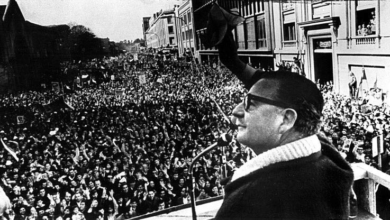In Oaxaca, Mexico, a popular campaign to oust the Governor and bring about social change has swept through the state, involving tens of thousands of people in protests and militant actions.
Because of its rising influence, the people’s campaign has been threatened and attacked by paramilitary forces and
 |
Military and police forces have been moved in by the state, including tanks and helicopters from the Federal Preventive Police, the Army and the Navy. These moves prompted the Popular Assembly of the People of Oaxaca (APPO) to declare a red alert.
The current political situation in Oaxaca began on May 22 as a teachers’ strike that demanded better wages and a higher budget to provide impoverished school children with uniforms, breakfasts and basic school supplies. It was led by Section 22 of the National Education Workers’ Union. The teachers formed an encampment in Oaxaca City’s central square.
Refusing to negotiate with the teachers, the conflict escalated when the state government of governor Ulises Ruiz Ortiz ordered police to attack the workers on June 14 in Oaxaca’s capital. A pitched battle ensued. After a few hours, the teachers, supported by local progressive groups and outraged residents, forced 3,000 riot police out of town. They have not been back since.
Thousands of supporters from across the state have poured into the city, joining protests against the government.
Led by unions, revolutionary Marxist parties, Indigenous groups and other working-class organizations, the people have waged a militant struggle to force Ruiz, a member of the Institutional Revolutionary Party (PRI), to resign.
The APPO was formed by these forces after the attack in mid-June. Without official institutional support, the APPO has advanced the people’s struggle in Oaxaca. The APPO exists independent of the established capitalist political parties, both liberal and conservative.
Since June 14, the APPO has taken increasingly radical actions. They have surrounded and occupied state government buildings, covered the city’s walls with revolutionary graffiti and taken over radio stations.
Ruiz and the state government’s response has been to get the Mexican federal government to intervene, arbitrarily arrest APPO and other movement leaders, and to send agents and assassins to break up protests. The government has used small groups of armed thugs loyal to the PRI to terrorize supporters.
The local bourgeoisie have also tried to pit different elements of the working class against each other. They have supported the paramilitary groups that attack the APPO, have planted agent provocateurs within the people’s organizations and more. Local capitalists also tried to mobilize a two-day business strike on Sept. 28. The Mexican daily La Jornada reported that it failed completely.
Federal troop buildup
The introduction of more troops into Oaxaca signals a heightened possibility of outright military intervention to “solve” the uprising in favor of the capitalists and their politicians.
An Oct. 3 APPO statement gave the following analysis: “there had not been such fear that the conflict would be resolved through the use of senseless, indiscriminate force. … The government’s discourse in recent days shows that there is a repositioning on its part going on in order to obtain control of the conflict and contain it, so that the people begin to accept that there will be no destitution of or resignation by Governor Ulises Ruiz Ortiz, and that will be under the current government structure that what is being called a ‘New Reform’ will be developed for the state.”
The statement continued, “Since last week there have been aerial operations on the part of the armed forces,
|
An estimated 20,000 military and police personnel are now in Oaxaca.
The people’s organizations in Oaxaca have not taken the provocations lying down. They have requested assistance from the Mexican and international movement in the form of “human rights observers” and “solidarity brigades.”
The APPO and other groups have trained members to maintain the more than 2,000 barricades set up in Oaxaca City. They have set up additional defensive structures to fend off current and future attacks. The barricades are enforced throughout the day and the night.
El Universal reported on Oct. 7 that “at many barricades men with clubs and Molotov cocktails stand in the shadows with their faces covered by bandanas or cheap surgical masks.”
Maria, an Indigenous woman who teaches in a rural elementary school, told El Universal, “If they kill us, then we were born to die. We are not afraid,” she added, “because we are here defending a just cause.”
The groups have also trained members in self-defense tactics. Additionally, a caravan of APPO representatives is traveling to Mexico City to gather support among progressive groups and raise the Oaxacan issue with workers in the country’s capital.
Government forced to negotiate
The National Democratic Convention (CND), the movement that voted to put Andrés Manuel López Obrador at the head of a parallel Mexican government, has indicated its support for the struggle in Oaxaca.
Guadalupe Acosta, secretary general of Obrador’s party, the Democratic Revolutionary Party, stated that the CND would act as human shields if the police and military attack the APPO.
Although federal troops are in Oaxaca, the strength of the people’s movement forced the Mexican government to open negotiations with them—something Ruiz refused for nearly five months. Both the APPO and the teachers’ union rejected the government’s “unilateral” settlement offer on Oct. 7.
The groups presented a counter proposal to Mexico’s Interior Minister on Oct. 9, reiterating the main demand that Ruiz resign.
It is not clear what will come of the negotiations. Whatever happens, the people of Oaxaca are continuing to organize and maintaining their resolve. They are building strength throughout Oaxaca, greater Mexico and beyond.






